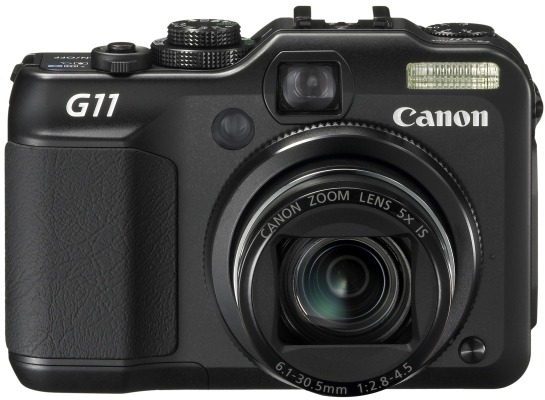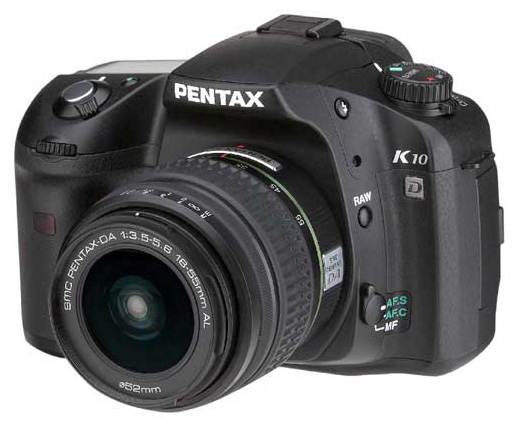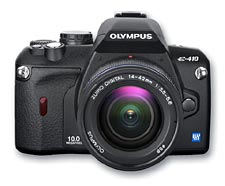TOPIC: RICOH
Canon PowerShot G11 first impressions and initial thoughts
16th January 2010Back in the early days of this blog, I mulled over the idea of having a high-end digital compact camera to complement a DSLR that then was delivering very dusty images; that Canon EOS 10D was cleaned since then and comes in for occasional use to this day. That was nearly three years ago, and a first generation Ricoh GR Digital was the item that then was catching my eye. At the time, I failed to justify spending that much money on such a thing and ended up acquiring a new Pentax K10D DSLR instead. The question that rattled about my head was this: what was the point of spending DSLR money on a compact camera? It is one that never really went away and comes to mind when you see the prices of interchangeable lens compacts like Olympus' Pen and equivalent offerings from Panasonic and Ricoh (there, it's interchangeable lens units rather than actual lenses).
The strongest counterpoint to the cost conundrum is the little matter of size. SLR (film or digital) cameras are sizeable things, and there is a place for having something that drops into a pocket. It is that which has propelled me into taking delivery of a Canon PowerShot G11. It may need a good-sized pocket but, unless you are going out with no jacket, it shouldn't be a problem most of the time. For those shorter sorties when I don't fancy bringing an SLR out, it is well-built and looks the business, though some acclimatisation is to make the best of the knobs, buttons and menus. Nevertheless, the included manual will help with this process (there's a paper quick start guide and more detailed documentation on CD).

The camera hasn't seen extensive use just yet, so here are a few early impressions. Firstly, there's the matter of size: it's even smaller than the first camera that I ever bought (more than fifteen years ago) and that was a Ricoh 35 mm compact film camera. That comparison is even more striking when you consider the feature sets. The Ricoh was a fixed 35 mm lens affair with things like date and time stamping, ISO choice and a nod towards scenic mode selection. In contrast, the much newer Canon is loaded with the sorts of things that normally are found almost exclusively on SLR's, starting with its effective 28-140 mm focal length range.
Exposure modes such as manual, aperture priority and shutter priority complement scene-based modes and another for movies (not a concern of mine, it has to be said). As if that weren't enough, there's exposure compensation too. It came as a surprise to me to find a form of manual focussing included, though it is not as convenient as turning a focussing ring on a lens. While you can see the inbuilt flash above, there's also a hot shoe and a place to attach a tripod too. Settings like white balance and file format are accessed using the Function/Set button, with the lever underneath the shutter release button controlling the focal length of the lens. In addition, there's also image stabilisation, and that's important when you're using live view to compose a photo. Spot metering and focal point selection are other things that find their way into the package. Some may be excited by other things, but exposure and focussing are essential for any photographic efforts.
An optical viewfinder is included, and it has diopter settings too, but my first impressions are that live view through the rear screen trumps it and I see no need for such things on SLR's. That also flips out from the camera body and can be rotated either for self-portraiture or for folding back in on the camera body for use like a non-articulated screen. Another use is with those occasions when the subject means holding the camera in positions that would be impossible with a conventional screen; holding the camera over your head or down low on the ground are the sorts of situations that come to mind.
Of course, there's more there than those features that I have listed, and the specifications on the Canon website are as good a place to start as any. So far, my only testing has taken the form of cursory checks and to make sure that the thing works properly. Still, this has given me more of a feel for the camera and how it operates. As you'd expect, high ISO settings are noisy, only for a bigger surprise to be that the smallest aperture setting is f/8. Being used to SLR's, I was expecting to get the likes of f/16 on there, but a spot of internet investigation indicated that I should have been taking the size of the sensor into account with my expectations. Any trials so far have been in dull weather, so I'd need to use it in a wider variety of conditions before giving it the sort of wider appraisal that you'd find in the likes of Outdoor Photography (who liked it, it has to be said). For what it's worth, I have found no major criticism so far, though I cannot see it usurping my SLR's not as if that ever was the intention anyway.
What Amateur Photographer recently reviewed
19th July 2007Amateur Photographer seems to have had a run of reviews recently. First off were the Olympus E-410 and E-510 that they seemed to like. Then, they moved onto the Ricoh Caplio GX100, which they seemed to like that too, though they did say that the quality wasn't up to SLR standards. But then again, it is a compact and that might be expecting a bit too much.
This week, Paint Shop Pro comes under the spotlight, as does Epson's V350 scanner. While I have yet to read these, I have been engaging in a spot of equipment acquisition anyway. My CanoScan 5000F scanner has been usurped by Epson's Perfection Photo 4490 and delighted I am with it too. The quality of the scans that I have been doing of prints has been good, and the presence of an on/off switch is a creditable one. When none of the other scanners that I have had possessed it, having to plug something in and out from the power socket is inconvenient to say the least.
In addition, I have also gone and got myself a new DSLR. Seeing Pentax's K10D going with an 18-55 mm lens for £499 at Jessop's overrode my better reasoning, putting paid to ideas of purchasing any other electronic goods for the rest of this year. It's an award-winning gadget, and Photography Monthly's Will Cheung seemed to get on fine with it. While Which Digital Camera said it was heavy, it has to stand up to use in the great outdoors.
Though the sensor may be a 10 megapixel affair, this will be an upgrade to my Canon EOS 10D; that has a sensor in need of clean right now (I plan to get it done by the professionals) and every time that I want to use an image that it has made, Photoshop's healing brush has to be pressed into service. Pentax does boast about all the seals that it has added to the K10D, a good thing if they cut down on the dust entering the camera. And if dust does get in, the sensor cleaning feature will hopefully see it off from the photos.
Image stabilisation, another value adding feature, is also there and may prove interesting. Strangely, there's some video capture as well, and I hope that it doesn't get the EU coming after me to collect retrospective camcorder duty. In any case, it's not a feature that I really need, with the Live View functions on the equivalent Olympus offerings falling into the same category. It'll be interesting to see how the K10D performs, given that it's a change from the Canon/Nikon hegemony that seems to dominate digital photography these days.

Update: I have since perused the current issue of Amateur Photographer and seen that Paint Shop Pro suffered from performance issues on computers that worked fine with Photoshop. Otherwise, it compared well with Adobe's offerings, even if the interface wasn't seen to be as slick. Epson's V350 was well received, though it was apparent that spending more got you a better scanner; that's always the way with these things.
Two reviews of the Olympus E-410 tell very different stories
21st June 2007
Recently, I encountered two very different reviews of the newly launched Olympus E-410 DSLR, in Which Digital Camera and Practical Photography, respectively. The review in the former was a positive affair, though it was a first look at the camera, but the impression formed by the latter reviewer was lukewarm in nature.
The camera features a live electronic viewer on its back, a carry-over from digital compacts and a feature that I may never use. While that might be the unique selling point for the camera, good image quality and the fact that it possesses a cleaning mechanism for its sensor are of much more interest to me.
Ironically, the Practical Photography review spent most of its time talking about the very feature of the camera that interests me the least, with only a scant mention of quality; to be frank, I didn't find it a very useful appraisal even if the electronic viewfinder may not be all that it's cracked up to be, and it's picture quality and camera handling that ultimately matter to the photography enthusiast.
In contrast, Which Digital Camera seemed to give a more rounded view and proved to be of more interest, and I'd be interested to see what the likes of Photography Monthly and Amateur Photographer might have to say. Incidentally, I also shall be awaiting the Which Digital Camera appraisal of Ricoh's Caplio GX100 in their next issue.
Could the Ricoh Caplio GX100 be my backup digital camera?
14th June 2007
Because my digital SLR has needed to be sent away for cleaning for a while now (meanwhile, I have got handy at using Photoshop Elements to clean up pictures...), I have been on the lookout for a backup camera so that I can add photos to any trip reports on my hillwalking blog without having to wait for film to be processed.
Previously, my eye was on Ricoh's GR Digital, but the same manufacturer has now introduced the award-winning Caplio GX100. The zoom range is a very useful 24-72 mm in 35 mm film terms, and that removable electronic viewfinder looks very neat. Having a 10 megapixel sensor adds to the appeal and advanced exposure modes like manual and aperture priority.
The feature list has almost ensured its ousting of the GR Digital from any wish list that I might have; the only thing outstanding is seeing how it performs in a photography magazine's full test review. A thumbs up from there might even get me onto the acquisition trail...